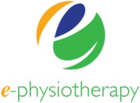Gastric Reflux/Hiatus Hernia
Gastric Reflux, often abbreviated as GERD/GORD (Gastroesophageal Reflux Disease), is a common condition that can be symptom free or you may have regurgitation, a feeling of heart-burn, chest pain, difficulty swallowing or feeling very full and bloated after eating. This may or may not be associated with a hiatus hernia, where part of the stomach [...]

